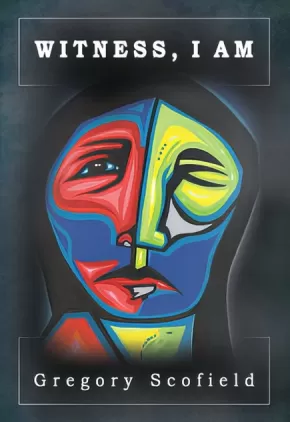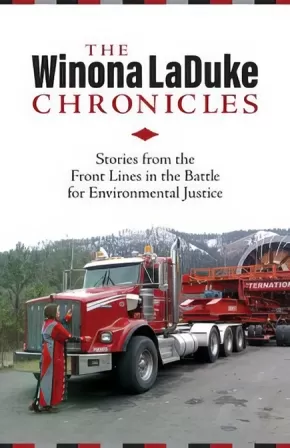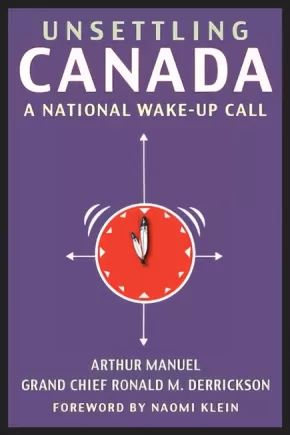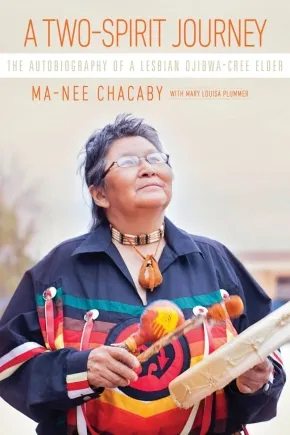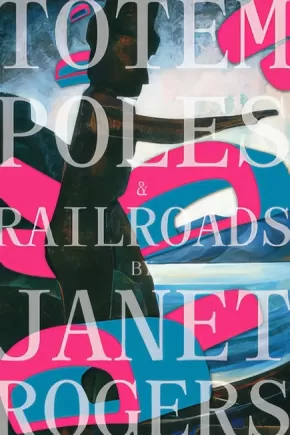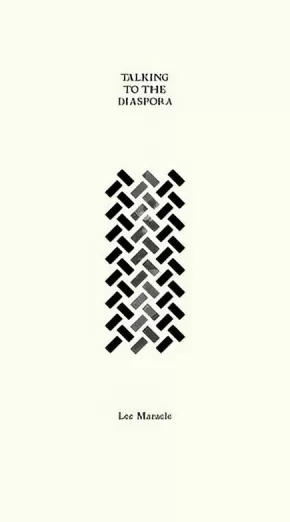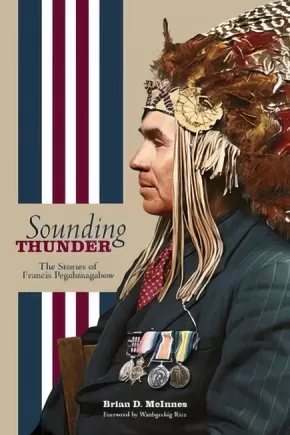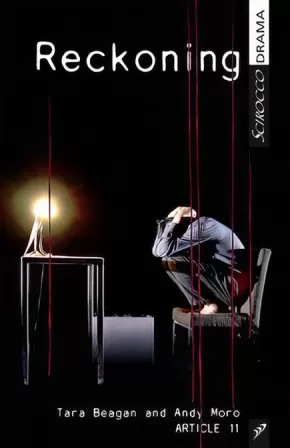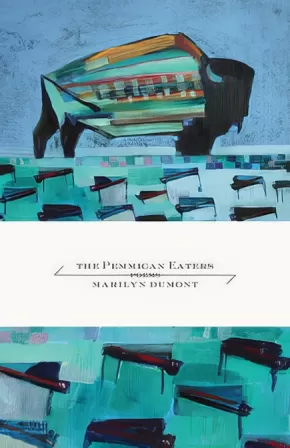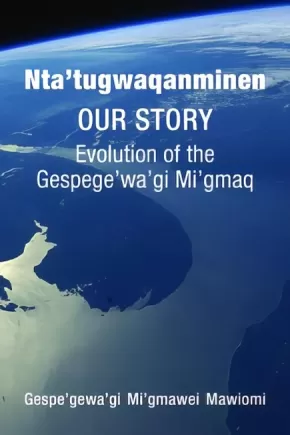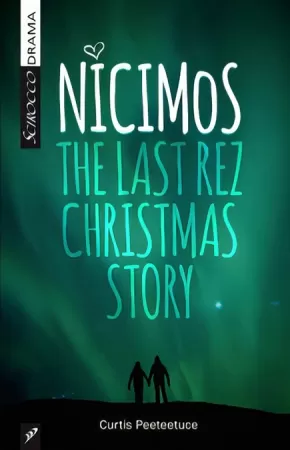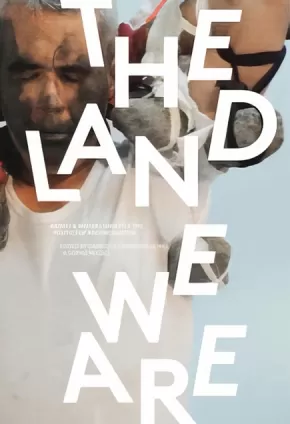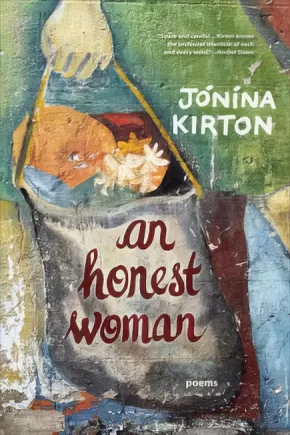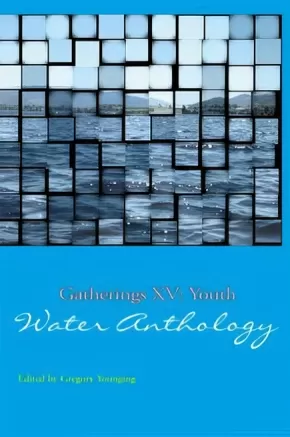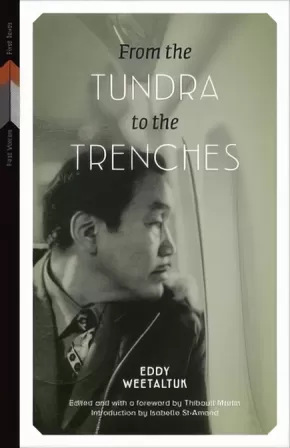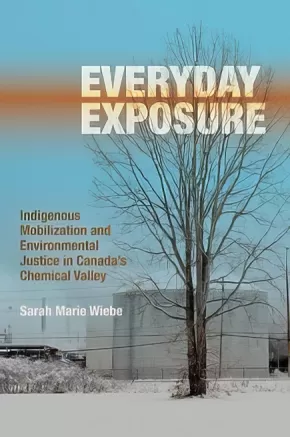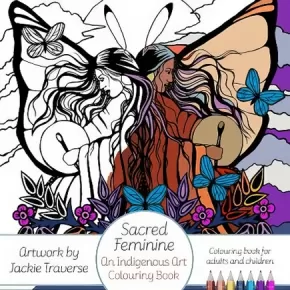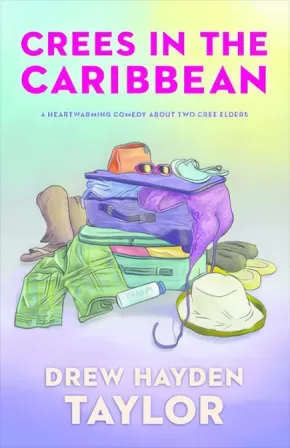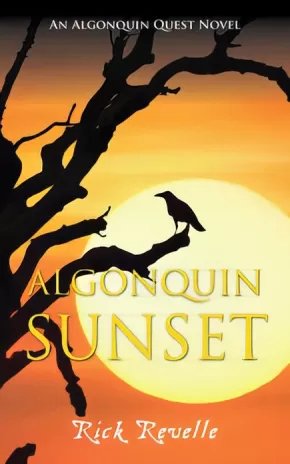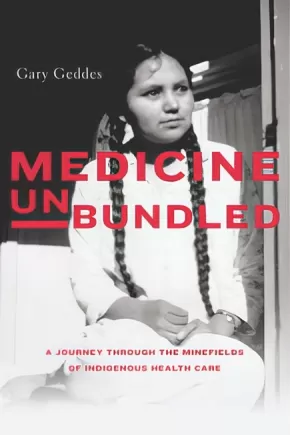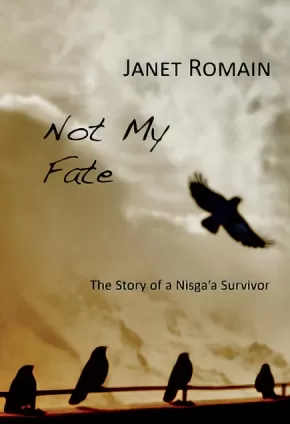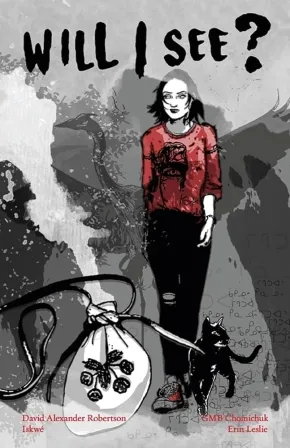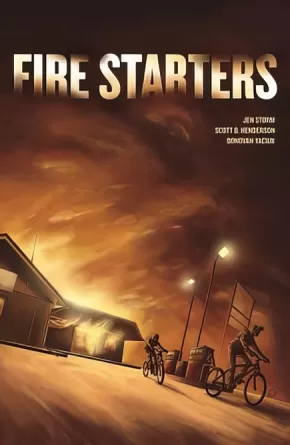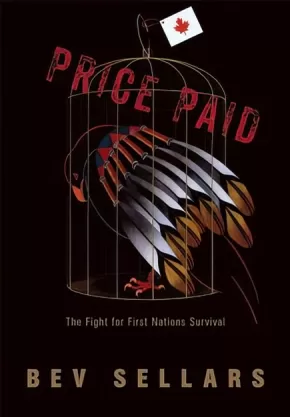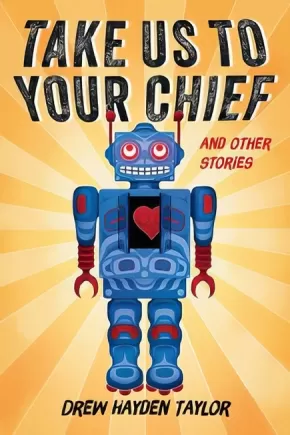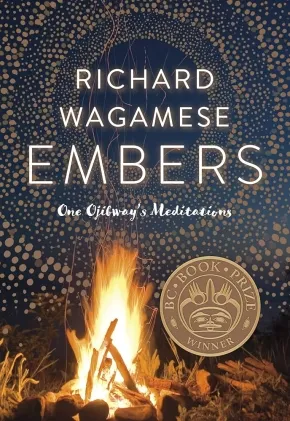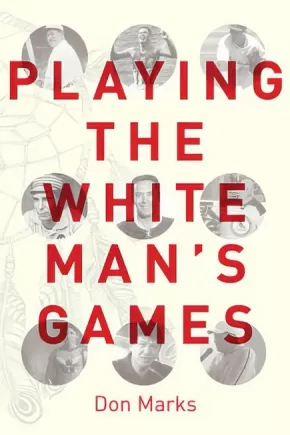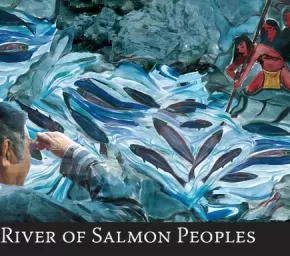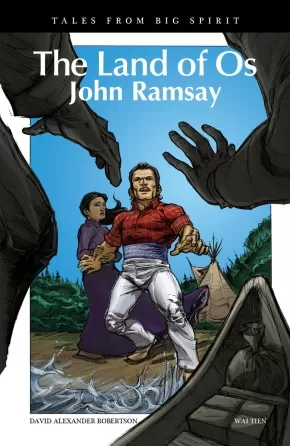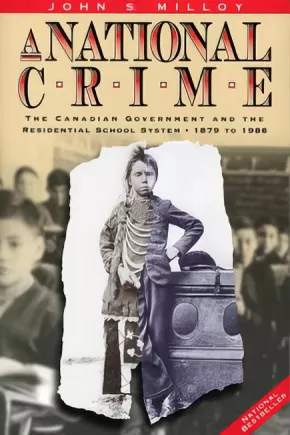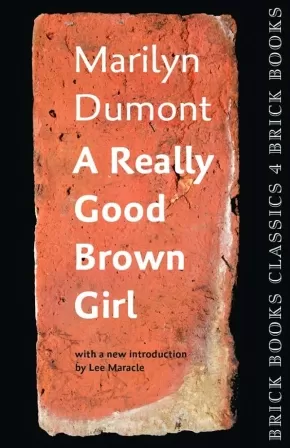
Canadian Indigenous Books for Schools 8 - 12 2017-2018
1
-
15
of
36 Results;
Sort By
Go To
of 3
Unsettling Canada: A National Wake-Up Call - Second Edition
$29.95
Format:
Paperback
Text Content Territories:
Indigenous Canadian;
ISBN / Barcode: 9781771135566
Synopsis:
Synopsis:
A Canadian bestseller and winner of the 2016 Canadian Historical Association Aboriginal History Book Prize, Unsettling Canada is a landmark text built on a unique collaboration between two First Nations leaders.
Arthur Manuel (1951-2017) was one of the most forceful advocates for Indigenous title and rights in Canada; Grand Chief Ron Derrickson, one of the most successful Indigenous businessmen in the country. Together, they bring a fresh perspective and bold new ideas to Canada's most glaring piece of unfinished business: the place of Indigenous peoples within the country's political and economic space.
This vital second edition features a foreword by award-winning activist Naomi Klein and an all-new chapter co-authored by law professor Nicole Schabus and Manuel's son, Ska7cis, honouring the multi-generational legacy of the Manuel family's work.
Reviews
“Pragmatic and helpful, this is a timely book for our fraught and political moment” — Quill & Quire
"Unsettling Canada is a breathtakingly beautiful story of Indigenous resistance, strength, and movement building. Unsettling Canada echoes the power of George Manuel's The Fourth World, centering the heart of the narrative deep inside a kind of Indigenous intelligence rarely shared outside our communities. This is the critical conversation that Canada and Indigenous peoples must have because it is centred on land, and, therefore, it is one of the most important books on Indigenous politics I've ever read." — Leanne Betasamosake Simpson, author of Dancing on Our Turtle's Back
Educator Information
This resource would be useful for courses in history, social justice, political science, and social studies. Recommended for students in grades 10 to 12 or those at a college/university level.
Additional Information
320 pages | 6.00" x 9.00"
Witness, I Am
$18.95
Format:
Paperback
Text Content Territories:
Indigenous Canadian;
ISBN / Barcode: 9780889713239
Synopsis:
Synopsis:
Witness, I Am is divided into three gripping sections of new poetry from one of Canada's most recognized poets. The first part of the book, "Dangerous Sound," contains contemporary themed poems about identity and belonging, undone and rendered into modern sound poetry. "Muskrat Woman," the middle part of the book, is a breathtaking epic poem that considers the issue of missing and murdered indigenous women through the reimagining and retelling of a sacred Cree creation story. The final section of the book, "Ghost Dance," raids the autobiographical so often found in Scofield's poetry, weaving the personal and universal into a tapestry of sharp poetic luminosity. From "Killer," Scofield eerily slices the dreadful in with the exquisite: "I could, this day of proficient blooms, / take your fingers, / tie them down one by one. This one for the runaway, / this one for the joker, / this one for the sass-talker, / this one for the judge, / this one for the jury. / Oh, I could kill you."
Educator Information
Recommended for students in grades 11 and 12, or at a college/university level, for courses in creative writing, English First Peoples, English, poetry, and English language arts.
Caution: explicit coarse and sexual language.
Additional Information
96 pages | 5.50" x 8.00"
The Winona LaDuke Chronicles: Stories from the Front Lines in the Battle for Environmental Justice
$25.00
Format:
Paperback
Text Content Territories:
Indigenous American; Indigenous Canadian;
ISBN / Barcode: 9781552669594
Synopsis:
Synopsis:
Chronicles is a major work, a collection of current, pressing and inspirational stories of Indigenous communities from the Canadian subarctic to the heart of Dine Bii Kaya, Navajo Nation. Chronicles is a book literally risen from the ashes—beginning in 2008 after her home burned to the ground—and collectively is an accounting of Winona’s personal path of recovery, finding strength and resilience in the writing itself as well as in her work. Long awaited, Chronicles is a labour of love, a tribute to those who have passed on and those yet to arrive.
Reviews
“Winona LaDuke’s latest book reads like a prayer. These are holy words— inspirational stories taken straight from the heart of indigenous communities throughout the world…(Chronicles) is lyrical, instructional, and infused with wry humor when the weight of the message becomes unbearable…LaDuke provides a roadmap through tribal nations’ belief systems; offering a spiritual compass and invaluable insight into the relationship of prophesy to the realities of climate change, economic collapse, food scarcity and basic human rights.” — Huffington Post
Educator Information
Recommended for students in grades 9 - 12, as well as those at a college/university level, for courses in science, environmental science, and social justice.
Additional Information
310 pages | 6.00" x 9.00"
Unsettling Canada: A National Wake-Up Call
$29.95
Format:
Paperback
Text Content Territories:
Indigenous Canadian;
ISBN / Barcode: 9781771131766
Synopsis:
Synopsis:
Unsettling Canada, a Canadian bestseller, is built on a unique collaboration between two First Nations leaders, Arthur Manuel and Grand Chief Ron Derrickson.
Both men have served as chiefs of their bands in the B.C. interior and both have gone on to establish important national and international reputations. But the differences between them are in many ways even more interesting. Arthur Manuel is one of the most forceful advocates for Aboriginal title and rights in Canada and comes from the activist wing of the movement. Grand Chief Ron Derrickson is one of the most successful Indigenous businessmen in the country.
Together the Secwepemc activist intellectual and the Syilx (Okanagan) businessman bring a fresh perspective and new ideas to Canada’s most glaring piece of unfinished business: the place of Indigenous peoples within the country’s political and economic space. The story is told through Arthur’s voice but he traces both of their individual struggles against the colonialist and often racist structures that have been erected to keep Indigenous peoples in their place in Canada.
In the final chapters and in the Grand Chief’s afterword, they not only set out a plan for a new sustainable indigenous economy, but lay out a roadmap for getting there.
Reviews
“This is the back story of both grassroots and backroom struggles that created the context in which we find ourselves today, one in which a new generation of First Nations leaders is demanding sovereignty and self-determination, and more and more non-Indigenous Canadians finally understand that huge swaths of this country we call Canada is not ours - or our government's - to sell.” — Naomi Klein, from the Foreword
“Pragmatic and helpful, this is a timely book for our fraught and political moment” — Quill & Quire
"Unsettling Canada is a breathtakingly beautiful story of Indigenous resistance, strength, and movement building. Unsettling Canada echoes the power of George Manuel's The Fourth World, centering the heart of the narrative deep inside a kind of Indigenous intelligence rarely shared outside our communities. This is the critical conversation that Canada and Indigenous peoples must have because it is centred on land, and, therefore, it is one of the most important books on Indigenous politics I've ever read." — Leanne Betasamosake Simpson, author of Dancing on Our Turtle's Back
Educator Information
This resource would be useful for courses in history, social justice, political science, and social studies. Recommended for students in grades 10 to 12 or those at a college/university level.
CONTENTS
Foreword Naomi Klein
Chapter 1 The Lay of the Land
Chapter 2 Institutionalizing a People: Indian Hospital, School, Jail
Chapter 3 White Paper to Red Paper: Drawing the Battle Lines
Chapter 4 Occupy Indian Affairs: Native Youth in Action
Chapter 5 Aboriginal Title: No Surrender
Chapter 6 The Constitution Express: A Grassroots Movement
Chapter 7 Don’t Let Them Bully You: A Business Interlude
Chapter 8 A Chief’s Concerns: Finances, the People, and the Land
Chapter 9 Upping the Ante: RCAP and a Landmark Court Decision
Chapter 10 The Battle in the Forest: The Trade in Indian Trees
Chapter 11 Sun Peaks to Geneva: Playgrounds and Fortresses
Chapter 12 Taking It to the Bank: Accounting for Unpaid Debt
Chapter 13 The Fourth World: A Global Movement
Chapter 14 Line of Defence: Side by Side for Mother Earth
Chapter 15 No Half Measures: The Price of Uncertainty
Chapter 16 Days of Protest: Young Activists Come Together
Chapter 17 The End of Colonialism
Afterword Grand Chief Ronald M. Derrickson
Acknowledgements
Appendix United Nations Declaration on the Rights of Indigenous Peoples
Notes
Index
Additional Information
288 pages | 6.00" x 9.00"
A Two-Spirit Journey: The Autobiography of a Lesbian Ojibwa-Cree Elder
$24.95
Format:
Paperback
Text Content Territories:
Indigenous Canadian; First Nations; Anishinaabeg; Oji-Cree;
Grade Levels: 12; University/College;
ISBN / Barcode: 9780887558122
Synopsis:
Synopsis:
A compelling, harrowing, but ultimately uplifting story of resilience and self-discovery.
A Two-Spirit Journey is Ma-Nee Chacaby’s extraordinary account of her life as an Ojibwa-Cree lesbian. From her early, often harrowing memories of life and abuse in a remote Ojibwa community riven by poverty and alcoholism, Chacaby’s story is one of enduring and ultimately overcoming the social, economic, and health legacies of colonialism.
As a child, Chacaby learned spiritual and cultural traditions from her Cree grandmother and trapping, hunting, and bush survival skills from her Ojibwa stepfather. She also suffered physical and sexual abuse by different adults, and in her teen years became alcoholic herself. At twenty, Chacaby moved to Thunder Bay with her children to escape an abusive marriage. Abuse, compounded by racism, continued, but Chacaby found supports to help herself and others. Over the following decades, she achieved sobriety; trained and worked as an alcoholism counsellor; raised her children and fostered many others; learned to live with visual impairment; and came out as a lesbian. In 2013, Chacaby led the first gay pride parade in Thunder Bay.
Ma-Nee Chacaby has emerged from hardship grounded in faith, compassion, humour, and resilience. Her memoir provides unprecedented insights into the challenges still faced by many Indigenous people.
Awards
- 2025 Canada Reads winner
Reviews
“From groundbreaking and controversial AIDS awareness programs in the 1990s to the work she continues to do today, both with her own family and her extended reserve family, her life and this memoir ultimately serve as handbook of hope.” — Lara Rae, Winnipeg Free Press
"A Two-Spirit Journey is a raw and emotional story that doesn’t just show readers the author’s scars. Chacaby bares all in an honest telling of her life that includes flaws, like her struggles with substance abuse and a sometimes rocky path to sobriety. Despite the turmoil, the autobiography does have its uplifting moments and characters. Heartwarming stories of childhood friendships, and most importantly a powerful relationship between the author and her grandmother, weave feelings of optimism and hope into a life that is oftentimes surrounded by darkness.” — Scott Paradis, tbnewswatch.com
“An extraordinary account of an extraordinary life and very highly recommended for community and academic library Contemporary Biography, LGBT, and Native American Studies collections.” — Midwest Book Review
“Activist, survivor, mother, counsellor, Ma-Nee Chacaby recounts her sometimes harrowing life with a calm and steady voice, infused with resilience and compassion. Effectively designed and edited to appeal to both the general public and those engaged in Indigenous studies, A Two-Spirit Journey presents an important story, powerfully told.” — Nik Burton, Rick Walker, and Carolyn Wood, Judges, 2017 Manitoba Book Awards
“The story that Chacaby and Plummer recount is truly an extraordinary one, but it is also one that will resonate with many people whose stories have not been often told. The perspective of a lesbian Ojibwa-Cree elder is invaluable for LGBT Native youth and will be an enriching experience for many others, particularly those who have experienced abuse, disability, poverty, or the effects of colonization.” — Kai Pyle, Studies in American Indian Literatures
Educator Information
This book would be useful for courses in women's studies, social studies, and gender studies. Recommended for students in grade 12 or at a college/university level.
Caution: discussion of physical and sexual abuse.
This resource is also available in French: Un parcours bispirituel: Recit d'une ainee ojibwe-crie lesbienne.
Additional Information
256 pages | 6.00" x 9.00"
Totem Poles & Railroads
$18.95
Format:
Paperback
Text Content Territories:
Indigenous Canadian;
ISBN / Barcode: 9781894037877
Synopsis:
Synopsis:
Totem Poles and Railroads succinctly defines the 500-year-old relationship between Indigenous nations and the corporation of Canada. In this, her fifth poetry collection, Janet Rogers' expands on that definition with a playful, culturally powerful and, at times, experimental voice. She pays honour to her poetic characters--real and imagined, historical and present day -- from Sacajawea to Nina Simone. Placing poetry at the centre of our current post-residential school/present-day reconciliation reality, Rogers' poems are expansive and intimate, challenging, thought-provoking and always personal.
Reviews
"To give Rogers’ poems a form, a body, I would have to name them blackbirds, formidable winged creatures who’ve chosen the highest branch and whose eyes allow us the vision we so often cannot see ourselves. I’m honoured to be called into this ceremony, sung awake by her prayers. Praise for Totem Poles and Railroads." —Gregory Scofield, author of Witness, I am
"These new poems by Janet Rogers are a straight shot metaphysical call to action in the wake of historical trauma, police violence, shameful treatment of our body Earth. They stand as urgent witness, clear talk in the face of colonized law built on lies. Rogers reminds us to pay attention, to listen. These words can heal." —Joy Harjo
"Janet Rogers’ latest book Totem Poles and Railroads doesn’t pull any punches. All of the stinging and difficult realities of colonialism are confronted head-on and with ferocity. Rogers is here to disrupt these white landscapes. Rogers is here to call out all of the bullshit both past and present. Totem Poles and Railroads is burning to be read." —Jordan Abel, Nisga’a Nation, author of Injun
Educator Information
This book would be useful for courses in creative writing, English, and language arts for students in grades 11 and 12 and those at a university/college level.
Additional Information
168 pages | 6.00" x 9.00"
Talking to the Diaspora
$19.00
Format:
Paperback
Text Content Territories:
Indigenous Canadian; First Nations;
ISBN / Barcode: 9781894037655
Synopsis:
Synopsis:
In a career that has spanned more than a quarter century, Lee Maracle has earned the reputation as one of Canada's most ardent and celebrated writers. Talking to the Diaspora, Maracle's second book of poetry, is at once personal and profound. From the revolutionary "Where Is that Odd Dandelion-Looking-Flower" to the tender poem "Salmon Dance," from the biting "Language" to the elegiac "Boy in the Archives," these poems embody the fearless passion and spirited wit for which Lee Maracle is beloved and revered.
Reviews
"Lee Maracle is one of our greatest gifts. Always smart, smooth and full of sly smiles, Maracle's latest, Talking to the Diaspora is a beautiful collection of thoughtful, rhythmic gems. Poetry is so lucky to have her back again.—Katherena Vermette, Governor General Award winning author of North End Love Songs
"The book’s unconventional and striking design, which alternates between black text on white and white text on a black background, lets us know that Talking to the Diaspora is not like other collections of poetry. The unnumbered pages contain full-page images of textured stone surfaces and grassland that serve as a reminder of the transitory nature of our words and songs... Talking to the Diaspora is a full, varied and energetic collection that ranges over a lifetime's worth of experience and engagement with the world. Here, Lee Maracle generously gives us a vision of the holistic, complex and fluid relationships between her peoples' history, their traumas, memories, bodies, songs, spirits, dreams and lives. Talking to the Diaspora is a rallying cry from a poet who draws from a "from a pool of ancient meaning" to lead us to regeneration and renewal...these poems are not meant merely to be read, but also to be lived.—Phoebe Wang, The Winnipeg Review
Educator Information
This book is recommended for students in grades 10-12 and those at a college/university level for courses in creative writing, English, poetry, and English language arts.
Additional Information
120 pages | 5.00" x 9.00"
Sounding Thunder: The Stories of Francis Pegahmagabow
$24.95
Format:
Paperback
Text Content Territories:
Indigenous Canadian; First Nations; Anishinaabeg; Ojibway;
ISBN / Barcode: 9780887558245
Synopsis:
Synopsis:
Francis Pegahmagabow (1889–1952), a member of the Ojibwe nation, was born in Shawanaga, Ontario. Enlisting at the onset of the First World War, he became the most decorated Canadian Indigenous soldier for bravery and the most accomplished sniper in North American military history. After the war, Pegahmagabow settled in Wasauksing, Ontario. He served his community as both chief and councillor and belonged to the Brotherhood of Canadian Indians, an early national Indigenous political organization. Francis proudly served a term as Supreme Chief of the National Indian Government, retiring from office in 1950.
Francis Pegahmagabow’s stories describe many parts of his life and are characterized by classic Ojibwe narrative. They reveal aspects of Francis’s Anishinaabe life and worldview. Interceding chapters by Brian McInnes provide valuable cultural, spiritual, linguistic, and historic insights that give a greater context and application for Francis’s words and world. Presented in their original Ojibwe as well as in English translation, the stories also reveal a rich and evocative relationship to the lands and waters of Georgian Bay.
In Sounding Thunder, Brian McInnes provides new perspective on Pegahmagabow and his experience through a unique synthesis of Ojibwe oral history, historical record, and Pegahmagabow family stories.
Awards
- Fred Landon Award, Ontario Historical Society (2018)
- American Book Award, Before Columbus Foundation (2017)
Reviews
“Debwemigad Nimkiig gaye Aadizookanag zhawenimaawaad. Brian McInnes has clearly been blessed by the Thunders and Great Storytellers. With Sounding Thunder he has achieved the perfect balance of personal memoir and scholarly inquiry. He shares with readers the stories that have connected one generation to another and in these cycles we find the truth about living. Dibaajimowinan omaada’oozhinang mii igo aanikoobijige.” – Margaret Ann Noodin, Assistant Professor, Department of English, University of Wisconsin
“Debwemigad Nimkiig gaye Aadizookanag zhawenimaawaad. Brian McInnes has clearly been blessed by the Thunders and Great Storytellers. With Sounding Thunder he has achieved the perfect balance of personal memoir and scholarly inquiry. He shares with readers the stories that have connected one generation to another and in these cycles we find the truth about living. Dibaajimowinan omaada’oozhinang mii igo aanikoobijige.” – Margaret Ann Noodin, Assistant Professor, Department of English, University of Wisconsin
“This uniquely intimate portrait illuminates Francis’s commitment to live in a way that reflected the spiritual values of sharing and respect for life, despite his military record of 378 enemy kills for which he became renowned.” – Allyson Stevenson, University of Guelph, Canadian Journal of History
“McInnes’ Sounding Thunder brings complexity and nuance to the story (or stories) of Francis Pegahmagabow’s life. Past authors have portrayed Pegahmagabow alternatively as a warrior, a veteran, and/or a political activist. Certainly, these depictions capture snapshots of his character. But McInnes goes much further, adding breadth and depth to the sketch of the Nishnaabe man from Georgian Bay. He has produced a high-quality piece of historical research that tells an important story of Indigenous peoples as human beings with challenges that exist both within and without the constraints of colonialism.” – Eric Story, Laurier Centre for Military, Strategic and Disarmament Studies
“Sounding Thunder is invaluable for those working in biographical, historical, Indigenous, military and political studies and the general reader. McInnes skillfully contextualizes his subject as one of Canada’s greatest war heroes as well as a member of his family, community, and Anishinaabe people.” – Brock Pitawanakwat, Assistant Professor, Department of Indigenous Studies, University of Sudbury
“Brian McInnes’ book is both elegant and masterful in its weaving of language, spirituality, storytelling, family, community, and physical place on the lands and waters of Georgian Bay as he presents the world and life of his great-grandfather, Francis Pegahmagabow. McInnes’ presentation of family stories in both Ojibwe and English, and his placement of them within their historical and geographical context, underlines Waubgeshig Rice’s claim in his foreword to Sounding Thunder that the book will remain ‘a vital resource for generations to come.’” – Jurors, Fred Landon Award, Ontario Historical Society
Educator Information
This book would be useful for social studies and history courses for students in grades 11 and 12 or at a college/university level.
This book would be useful for social studies and history courses for students in grades 11 and 12 or at a college/university level.
Additional Information
240 pages | 6.00" x 9.00" | 31 b&w illustrations | 5 b&w tables | bibliography
240 pages | 6.00" x 9.00" | 31 b&w illustrations | 5 b&w tables | bibliography
Reckoning
$15.95
Format:
Paperback
Text Content Territories:
Indigenous Canadian;
ISBN / Barcode: 9781927922262
Synopsis:
Synopsis:
Reckoning is a triptych of three short plays: Witness is a dance-movement piece featuring a Truth and Reconciliation Commissioner who unravels as he confronts the brutal testimony of residential school survivors; in Daughter, the daughter of a teacher who was accused of rape seduces her father's accuser; and Survivor is a solo piece about a man preparing to commit suicide as a protest against the insufficiencies of the reconciliation process.
Agonizing, poignant, theatrical, hilarious, and true, Reckoning illuminates the difficulties of trying to come to terms with our country's painful past.
Educator Information
Recommended for grade 11 and 12 students for courses in performance arts, language arts, and English. Also useful for college and university courses in these areas.
Caution: explicit language and discussion of sexual and physical abuse.
Additional Information
66 pages | 5.00" x 8.00"
The Pemmican Eaters
$18.95
Format:
Paperback
Text Content Territories:
Indigenous Canadian; Métis;
ISBN / Barcode: 9781770412415
Synopsis:
Synopsis:
A picture of the Riel Resistance from one of Canada’s preeminent Métis poets.
With a title derived from John A. Macdonald’s moniker for the Métis, The Pemmican Eaters explores Marilyn Dumont’s sense of history as the dynamic present. Combining free verse and metered poems, her latest collection aims to recreate a palpable sense of the Riel Resistance period and evoke the geographical, linguistic/cultural, and political situation of Batoche during this time through the eyes of those who experienced the battles, as well as through the eyes of Gabriel and Madeleine Dumont and Louis Riel.
Included in this collection are poems about the bison, seed beadwork, and the Red River Cart, and some poems employ elements of the Michif language, which, along with French and Cree, was spoken by Dumont’s ancestors. In Dumont’s The Pemmican Eaters, a multiplicity of identities is a strengthening rather than a weakening or diluting force in culture.
Awards
- Winner of the 2016 Stephan G. Stephansson Award for Poetry
Reviews
“A rollicking poem about the fiddle ('the first high call of the fiddle bids us dance/baits with its first pluck and saw of the bow/reels us, feet flick — fins to its lure and line') becomes a statement of cultural pride and defiance — much like The Pemmican Eaters as a whole.” — Toronto Star
“Dumont’s work is visual and evocative, highlighting recurring symbols and images of a natural world that will be familiar to any dweller of the Prairies . . . The Pemmican Eaters builds off the poet’s earlier work and highlights a writer who has mastered both craft and voice.” — Quill & Quire
“Dumont honours Métis traditions in music and beadwork in a number of lyrically driven poems. The Pemmican Eaters is a statement of cultural pride and defiance, much like Marilyn herself.” — CBC News Online
“Marilyn Dumont uses both rhythmic and free verse to provide a brilliant and insightful look at Métis and Cree people.” — Scene Magazine
Educator Information
This book would be useful for grades 9 - 12 in courses such as creative writing, English language arts, and social studies. Also recommended for students a college/university level.
Additional Information
96 pages | 5.50" x 8.50"
Nta'tugwaqanminen: Our Story: Evolution of the Gespege'wa'gi Mi'gmaq
$19.95
Format:
Paperback
Text Content Territories:
Indigenous Canadian; First Nations; Mi'kmaq;
ISBN / Barcode: 9781552667712
Synopsis:
Synopsis:
Nta’tugwaqanminen provides evidence that the Mi’gmaq of the Gespe’gewa’gi (Northern New Brunswick and the Gaspé Peninsula) have occupied their territory since time immemorial. They were the sole occupants of it prior to European settlement and occupied it on a continuous basis. This book was written through an alliance between the Mi’gmaq of Northern Gespe’gewa’gi (Gaspé Peninsula), their Elders and a group of eminent researchers in the field with the aim of reclaiming their history, both oral and written, in the context of what is known as knowledge re-appropriation. It also provides non-Aboriginal peoples with a view of how Mi’gmaq history looks when it is written from an Indigenous perspective.
There are two voices in the book — that of the Mi’gmaq of the Gespe’gewa’gi, including the Elders, as they act as narrators of the collective history, and that of the researchers, who studied all possible aspects of this history, including advanced investigation on place names as indicators of migration patterns.
Nta’tugwaqanminen speaks of the Gespe’gewa’gi Mi’gmaq vision, history, relation to the land, past and present occupation of the territory and their place names and what they reveal in terms of ancient territorial occupation. It speaks of the treaties they agreed to with the British Crown, the respect of these treaties on the part of the Mi’gmaq people and the disrespect of them from the various levels of governments. This book speaks about the dispossession the Mi’gmaq of Gespe’gewa’gi had to endure while the European settlers illegally occupied and developed the Gaspé Peninsula to their own advantage and the rights and titles the Mi’gmaq people still have on their lands.
Author Note: The Gespe’gewa’gi Mi’gmawei Mawiomi is the organization that represents the three communities of the northern part of Gespe’gewa’gi. Research associates Richard Jeannotte and Donald Jeannotte, both Gespe’gewa’gi Mi’gmaqs, and Danielle E. Cyr, senior scholar at York University, wrote the seven first chapters. Troy Jerome, current Mi’gmawei Mawiomi Secretariat Executive Director / Nutewistoq wrote Chapter 8.
Educator Information
This book would be useful for courses in social studies, history, and English language arts. Recommended for grades 8-12, as well as college/university courses.
This book would be useful for courses in social studies, history, and English language arts. Recommended for grades 8-12, as well as college/university courses.
Table of Contents
Foreword by Satsun (Herb George)
Introduction: How We Came to Write Nta’tugwaqanminen
Our Territory in Prehistoric Times
Our Place Names
Our Creation Story and Fundamental Myths
Our Historical Presence in Gespe’gewa’gi
The Treaty Relationship Between Mi’gmaq of Gespe’gewa’gi and the British Crown
Good Faith and Dispossession
Our Constitutional Rights as Gespe’gewa’gi Mi’gmaq
The Gespe’gewa’gi Mi’gmaq in Contemporary Times
Conclusion: Our Story Continues
Notes
Bibliography
Index
Foreword by Satsun (Herb George)
Introduction: How We Came to Write Nta’tugwaqanminen
Our Territory in Prehistoric Times
Our Place Names
Our Creation Story and Fundamental Myths
Our Historical Presence in Gespe’gewa’gi
The Treaty Relationship Between Mi’gmaq of Gespe’gewa’gi and the British Crown
Good Faith and Dispossession
Our Constitutional Rights as Gespe’gewa’gi Mi’gmaq
The Gespe’gewa’gi Mi’gmaq in Contemporary Times
Conclusion: Our Story Continues
Notes
Bibliography
Index
Additional Information
320 pages | 6.00" x 9.00"
320 pages | 6.00" x 9.00"
Nicimos: The Final Rez Christmas Story
$15.95
Format:
Paperback
Text Content Territories:
Indigenous Canadian; First Nations; Cree (Nehiyawak);
ISBN / Barcode: 9781927922187
Synopsis:
Synopsis:
This Christmas season, things have gone awry for the kohkoms of Kiwetinohk. Clare Bear is engaged to be married, Zula Merasty is moving off-reserve and Sihkos Sinclare is in jail. It all comes to fruition at Clare's stagette. Nicimos is dedicated to the memory of Lacy Morin-Desjarlais.
Reviews
“Nicimos means sweetheart in Cree and that’s what this play is. A warm-hearted sweetheart with depth and charm and a great sense of humour. The final installment of the Rez Christmas series finds Saskatchewan Native Theatre Company director-writer Curtis Peeteetuce in outstanding form. His words are a gift to the actors and his generosity is reciprocated by incredibly satisfying performances. There’s more here than just a play, you realize. It’s an example of the power of theatre to unite, heal and humanize by appealing to First Nations audiences and the broader community.” – Saskatoon Star Phoenix
Educator Information
This book may be useful for courses in English language arts, creative writing, and performance arts for grades 11 to 12 students, as well as for students at a college/university level.
Caution: references to sexual and alcohol abuse and some Indigenous stereotypes.
Additional Information
72 pages | 5.50" x 8.50"
The Land We Are: Artists and Writers Unsettle the Politics of Reconciliation
$24.95
Editors:
Format:
Paperback
Text Content Territories:
Indigenous Canadian;
ISBN / Barcode: 9781894037631
Synopsis:
Synopsis:
The Land We Are is a stunning collection of writing and art that interrogates the current era of reconciliation in Canada. Using visual, poetic, and theoretical language, the contributors approach reconciliation as a problematic narrative about Indigenous-settler relations, but also as a site where conversations about a just future must occur. The result of a four-year collaboration between artists and scholars engaged in resurgence and decolonization, The Land We Are is a moving dialogue that blurs the boundaries between activism, research, and the arts.
The contributors to this book include leading artists and scholars engaged in questions of resurgence, restitution, and decolonization.
Contributors: Jordan Abel, Leah Decter, Jonathan Dewar, David Garneau, Ayumi Goto, Allison Hargreaves, Gabrielle L'Hirondelle Hill, Jaimie Isaac, David Jefferess, Layli Long Soldier, The New BC Indian Art and Welfare Society Collective, Sophie McCall, Peter Morin, Skeena Reece, Dylan Robinson, Sandra Semchuk, Adrian Stimson, Clement Yeh, and Keren Zaiontz.
Reviews
"This beautifully produced, richly illustrated volume not only offers readers a visual journey into the featured artistic installations and performance pieces, but through its creative use of text and graphic design is itself an artistic statement on reconciliation." --Winnipeg Free Press
Educator Information
Recommended for students in grades 11 and 12, as well as at a college/university level.
Additional Information
240 pages | 6.50" x 9.50"
An Honest Woman
$16.95
Format:
Paperback
Text Content Territories:
Indigenous Canadian;
ISBN / Barcode: 9781772011449
Synopsis:
Synopsis:
An Honest Woman by Jonina Kirton confronts us with beauty and ugliness in the wholesome riot that is sex, love, and marriage. From the perspective of a mixed-race woman, Kirton engages with Simone de Beauvoir and Donald Trump to unravel the norms of femininity and sexuality that continue to adhere today.
Kirton recalls her own upbringing, during which she was told to find a good husband who would “make an honest woman” out of her. Exploring the lives of many women, including her mother, her contemporaries, and well-known sex-crime stories such as the case of Elisabeth Fritzl, Kirton mines the personal to loosen the grip of patriarchal and colonial impositions.
An Honest Woman explores the many ways the female body is shaped by questions that have been too political to ask: What happens when a woman decides to take her sexuality into her own hands, dismissing cultural norms and the expectations of her parents? How is a young woman’s sexuality influenced when she is perceived as an “exotic” other? Can a woman reconnect with her Indigenous community by choosing Indigenous lovers?
Daring and tender in their honesty and wisdom, these poems challenge the perception of women’s bodies as glamorous and marketable commodities and imagine an embodied female experience that accommodates the role of creativity and a nurturing relationship with the land.
Reviews
“Jonina Kirton is courageously honest about her life experiences as a female of Indigenous and immigrant ancestry. Many poems resonate deeply, as we identify with her personal quest to figure out who she is, and the unacceptable things done to her. Her raw honesty is unsettling and uncomfortable, because it can be our truth too. Her poems depict devaluation and dehumanization, grieving, lessons learned. Her poems offer important insights as to why there are thousands of missing and murdered Indigenous women.” — Senator Lillian E. Dyck
“When writing from the voice of between, writer and reader have no place to hide. Assumptions and camouflage fall away. Murdered, missing, and violated women and girl voices have been silenced. The story lethally repeats. Kirton picks over how she was raised familially and culturally like a crime scene. Too, she affirms, ‘I have been here forever and I will rise again and again.’ Tough, eloquent, revelatory, these poems are the very ones we are desperately in need of.” — Betsy Warland, author of Oscar of Between: A Memoir of Identity and Ideas
“I’m sure people have been looking at me strangely every time I gasp, but I can’t glance away from the page for even a second to notice. Some of the poems end sharply, with a punch; some deliberately leave me searching for the next line; others show the repetition of heartbreaking cycles of violence and oppression, but offer a portrayal of resilience, too.” — All Lit Up!
Educator Information
This book would be useful for Women's Studies, Creative Writing, English Language Arts, Poetry, and English courses. Recommended for grades 11-12 and university-college students.
Please be advised, this book contains explicit sexual references and references to sexual and physical abuse.
Additional Information
104 pages | 6.00" x 9.00"
Gatherings Journal XV: Youth Water Anthology
$22.95
Editors:
Format:
Paperback
Text Content Territories:
Indigenous Canadian;
ISBN / Barcode: 9781926886404
Synopsis:
Synopsis:
Gatherings XV: Youth - Water Anthology features writing submissions from B.C. based Indigenous Youth on the theme of water.
The Gatherings-Water project reflects the cultural rejuvenation of Indigenous Youth in B.C. It is not only a revival of a respected anthology series, but also a new level of engagement between publishing house and community, between established writers and emerging voices, and finally a testament to the connection of Indigenous Youth with the life-sustaining power of water.
Essays, narratives, fictional pieces and poems are grouped thematically under headings:
- Drip, Drip, Drip
- Splashes
- Tears
- Cleansing Rain
- Rivers Flow
- Waves
- Tsunami
The authors are from all over BC from Haida Gwaii to Vancouver Island.
Educator Information
Useful for English Language Arts courses for grades 10-12.
Additional Information
248 pages | 6.00" x 9.00"
From the Tundra to the Trenches
$24.95
Editors:
Format:
Paperback
Text Content Territories:
Indigenous Canadian; Inuit;
ISBN / Barcode: 9780887558221
Synopsis:
Synopsis:
“My name is Weetaltuk; Eddy Weetaltuk. My Eskimo tag name is E9-422.” So begins From the "Tundra to the Trenches." Weetaltuk means “innocent eyes” in Inuktitut, but to the Canadian government, he was known as E9-422: E for Eskimo, 9 for his community, 422 to identify Eddy.
In 1951, Eddy decided to leave James Bay. Because Inuit weren’t allowed to leave the North, he changed his name and used this new identity to enlist in the Canadian Forces: Edward Weetaltuk, E9-422, became Eddy Vital, SC-17515, and headed off to fight in the Korean War. In 1967, after fifteen years in the Canadian Forces, Eddy returned home. He worked with Inuit youth struggling with drug and alcohol addiction, and, in 1974, started writing his life’s story. This compelling memoir traces an Inuk’s experiences of world travel and military service. Looking back on his life, Weetaltuk wanted to show young Inuit that they can do and be what they choose.
Reviews
“Endlessly interesting; an account of a traditional way of life now lost, a gripping first-hand account of a front-line soldier during the war, and an honest account of a young man’s adventures and misadventures. It is to all our benefit that it has, at last, found its way into print." — Michael Melgaard, The National Post
“Tender, honest, and often raw, Weetaltuk’s storytelling is masterful, engrossing, and deeply human. He has imbued his writing with a philosophical nuance that is characteristically Inuit: very subtle, yet profound." — Siku Allooloo, The Malahat Review
“Recounts the adventures of Inuk veteran Eddy Weetaltuk, from his early life in the North to his escape to the south under an assumed identity, to his enlistment in the Canadian Forces, which took him across the Canadian West, to Japan and Germany, and into battle in Korea. Adopting the name Eddy Vital was necessary in 1951 because the federal government restricted the movement of Inuit people. Through his alias, Weetaltuk was able to see the world; in the army, he experienced equality and respect – all the while never forgetting his true identity as an Inuk. The publication history of From the Tundra to the Trenches is itself a four-decades-long saga of many twists and turns. That it now finds English publication (after first appearing in French and German) owes to the author’s conviction that his life story be read as a work of literature with the makings of a bestseller. Eddy Weetaltuk was right.”— Jade Colbert, The Globe and Mail
“For those interested in Inuit culture it offers the rare and valuable perspective of an Inuk looking out from his culture at the world rather than the world looking in. “ — P. T. Sherrill, CHOICE
Educator & Series Information
From the Tundra to the Trenches is the fourth book in the First Voices, First Texts series, which publishes lost or underappreciated texts by Indigenous writers. This new English edition of Eddy Weetaltuk’s memoir includes a foreword and appendix by Thibault Martin and an introduction by Isabelle St-Amand.
Additional Information
280 pages | 5.50" x 8.50" | 25 colour illustrations, 3 b&w photographs, bibliography
Everyday Exposure: Indigenous Mobilization and Environmental Justice in Canada's Chemical Valley
$32.95
Format:
Paperback
Text Content Territories:
Indigenous Canadian; First Nations; Anishinaabeg; Ojibway;
ISBN / Barcode: 9780774832649
Synopsis:
Synopsis:
Surrounded by Canada’s densest concentration of chemical manufacturing plants, members of the Aamjiwnaang First Nation express concern about a declining male birth rate and high incidences of miscarriage, asthma, cancer, and cardiovascular illness. Everyday Exposure uncovers the systemic injustices they face as they fight for environmental justice. Exploring the problems that conflicting levels of jurisdiction pose for the creation of effective policy, analyzing clashes between Indigenous and scientific knowledge, and documenting the experiences of Aamjiwnaang residents as they navigate their toxic environment, this book argues that social and political change requires a transformative “sensing policy” approach, one that takes the voices of Indigenous citizens seriously.
Educator Information
This book would be useful for courses in Environmental Studies, Science, Social Justice, and Social Studies.
Additional Information
280 pages | 6.00" x 9.00"
Sacred Feminine: An Indigenous Art Colouring Book
$24.00
Artists:
Format:
Paperback
Text Content Territories:
Indigenous Canadian;
ISBN / Barcode: 9781552669198
Synopsis:
Synopsis:
Colouring book for adults and children.
Sacred Feminine is a colouring book by Anishinaabe artist Jackie Traverse.
The beautiful and intricate works of art within depict images of strength, resilience, and empowerment. With each image, the artist explains the symbolism and meaning represented. The first of its kind, Sacred Feminine is intended to heal and educate readers and colourers of all ages.
Additional Information
64 pages | 10.00" x 8.00"
Read, Listen, Tell: Indigenous Stories from Turtle Island
$39.99
Editors:
Format:
Paperback
Text Content Territories:
Indigenous Canadian;
ISBN / Barcode: 9781771123006
Synopsis:
Synopsis:
Read, Listen, Tell brings together an extraordinary range of Indigenous stories from across Turtle Island (North America). From short fiction to as-told-to narratives, from illustrated stories to personal essays, these stories celebrate the strength of heritage and the liveliness of innovation. Ranging in tone from humorous to defiant to triumphant, the stories explore core concepts in Indigenous literary expression, such as the relations between land, language, and community, the variety of narrative forms, and the continuities between oral and written forms of expression. Rich in insight and bold in execution, the stories proclaim the diversity, vitality, and depth of Indigenous writing.
Building on two decades of scholarly work to centre Indigenous knowledges and perspectives, the book transforms literary method while respecting and honouring Indigenous histories and peoples of these lands. It includes stories by acclaimed writers like Thomas King, Sherman Alexie, Paula Gunn Allen, and Eden Robinson, a new generation of emergent writers, and writers and storytellers who have often been excluded from the canon, such as French- and Spanish-language Indigenous authors, Indigenous authors from Mexico, Chicana/o authors, Indigenous-language authors, works in translation, and "lost" or underappreciated texts.
In a place and time when Indigenous people often have to contend with representations that marginalize or devalue their intellectual and cultural heritage, this collection is a testament to Indigenous resilience and creativity. It shows that the ways in which we read, listen, and tell play key roles in how we establish relationships with one another, and how we might share knowledges across cultures, languages, and social spaces.
Reviews
Edited by experts in Indigenous literature and contextualised beautifully, historical writers like E. Pauline Johnson are placed alongside exciting genres like Indigenous Science Fiction — illustrating the vibrancy and innovation of Indigenous storytelling across time, space and politics. If you want a primer on Indigenous cultural expressions, this is for you. If you want deft, detailed stories in Indigenous written, oral and graphic traditions, these will expand your thinking. Read, Listen, Tell will make you laugh, dream and search for more. — Niigaanwewidam Sinclair
A unique compendium that is the direct result of outstanding and painstaking scholarship, Read, Listen, Tell: Indigenous Stories from Turtle Island is an impressively informative, deftly organized, and exceptionally well presented volume that is unreservedly recommended for both community and academic library Indigenous Cultural Studies collections and supplemental reading lists. — Midwest Book Review
Read, Listen, Tell collects a brilliant and vast array of indigenous short fiction, bolstered by insightful critical essays that prioritize indigenous voices, culture, and methodologies. — Clarissa Goldsmith, Foreword Reviews, July 2017
Educator Information
• Connects Indigenous writing across colonial settler borders (of Canada, USA, and Mexico) at a time when those borders are hardening in light of security measures.
• Truth and Reconciliation Commission report highlights focus on education, prioritizing Indigenous knowledges, pedagogies, and perspectives—this book provides that.
• Provides curriculum material for new Indigenous content mandates in some provinces (Ontario, BC).
• Includes French-, Spanish-, and Indigenous-language.
• Indigenous authors (in translation).
Additional Information
410 pages | 6.00" x 9.00"
Edited by Sophie McCall, Deanna Reder, David Gaertner, and Gabrielle L'Hirondelle Hill
Crees in the Caribbean
$18.95
Format:
Paperback
Text Content Territories:
Indigenous Canadian; First Nations; Cree (Nehiyawak);
ISBN / Barcode: 9781772011487
Synopsis:
Synopsis:
A heartwarming comedy about two middle-aged First Nations seniors, Evie and Cecil, on their very first trip out of the country. Evie and Cecil reminisce and bicker as they review a lifetime together.
CECIL
So, what exactly are we going to do now that we’re here in Mexico?
EVIE
I’m so glad you asked. Supposedly there are some ancient Mayan ruins somewhere in the interior, not far from here. I thought that might be interesting.
CECIL
If you want to look at an ancient, broken-down, Indian ruin, we can go visit your cousin.
Evie and Cecil are celebrating their thirty-fifth wedding anniversary. As a gift, their grown children send them on a second honeymoon – to a fabulous resort on the Caribbean coast of Mexico. The only problem is that neither have ever been out of the country, let alone off their Cree reservation. Each reacts to their new experiences differently, and something ominous seems to be bothering Cecil. Despite the sun, sand, and sea sparkling right outside the resort window, all Cecil seems to want to do is sit alone in his hotel room, idly flipping through TV channels, the curtains pulled tight. What is he worried about? Maybe there is more behind this trip than he has been told. The past, present, and future all pay the couple a visit as they acclimatize to the pleasures of Mexico –and spicy food. Mixed up in all the fun is their hotel housekeeper, Manuela. As they form a bond with this courteous young local, they help her navigate some of the troublesome situations in which she finds herself.
Cast of 1 man and 2 women.
Review
"The play is packed with wit and humour, but also packs an emotional punch. At the heart of Crees in the Caribbean is a commentary on the universality of human experiences from culture to culture; it shows that people from all parts of the world can share similar stories and experiences." — The Argus
Additional Information
128 pages | 5.50" x 8.50"
Speaking Our Truth: A Journey of Reconciliation
$29.95
Format:
Hardcover
Text Content Territories:
Indigenous Canadian;
ISBN / Barcode: 9781459815834
Synopsis:
Synopsis:
Canada's relationship with its Indigenous people has suffered as a result of both the residential school system and the lack of understanding of the historical and current impact of those schools. Healing and repairing that relationship requires education, awareness and increased understanding of the legacy and the impacts still being felt by Survivors and their families. Guided by acclaimed Indigenous author Monique Gray Smith, readers will learn about the lives of Survivors and listen to allies who are putting the findings of the Truth and Reconciliation Commission into action.
Educator Information
Recommended for grades 4 to 8.
A teacher guide for this resource is also available: Speaking Our Truth Teacher Guide
Additional Information
160 pages | 7.50" x 9.00"
Algonquin Sunset
$12.99
Format:
Paperback
Text Content Territories:
Indigenous Canadian; First Nations; Anishinaabeg; Algonquin; Haudenosaunee (Iroquois); Kanyen'keha:ka (Mohawk); Mi'kmaq; Sioux; Lakota;
ISBN / Barcode: 9781459737020
Synopsis:
Synopsis:
Anokì and his sister Pangì Mahingan have grown up, and now face a decision that will change their lives forever.
Twelve years after Mahingan was wounded battling for his life against the Haudenosaunee warrior known as Ö:nenhste Erhar (Corn Dog), we rejoin his family and learn what fate held for him.
Now, his children, Anokì and Pangì Mahingan, along with their twin cousins Makwa and Wàbek, are grown and have adult responsibilities. Still living with their Algonquin family, they have become a formidable fighting unit with the addition of three Mi´kmaq warriors, E´s, Jilte´g, and the fierce Elue´wiet Ga´qaquj.
However, there is danger in the land of the setting sun, and nothing is more dangerous than what the family is going to encounter from the fierce enemy of their new Anishinaabe allies: the Lakȟóta.
Educator Information
Recommended Ages: 12-15.
Series Information
This novel is part of the Algonquin Quest Series, a series of young adult novels from Algonquin author Rick Revelle.
Additional Information
304 pages | 5.00" x 8.00"
Medicine Unbundled: A Journey Through the Minefield of Indigenous Health Care
$22.95
Format:
Paperback
Text Content Territories:
Indigenous Canadian;
Grade Levels: University/College;
ISBN / Barcode: 9781772031645
Synopsis:
Synopsis:
A shocking exposé of the dark history and legacy of segregated Indigenous health care in Canada.
After the publication of his critically acclaimed 2011 book Drink the Bitter Root: A Writer’s Search for Justice and Healing in Africa, author Gary Geddes turned the investigative lens on his own country, embarking on a long and difficult journey across Canada to interview Indigenous elders willing to share their experiences of segregated health care, including their treatment in the "Indian hospitals" that existed from coast to coast for over half a century.
The memories recounted by these survivors—from gratuitous drug and surgical experiments to electroshock treatments intended to destroy the memory of sexual abuse—are truly harrowing, and will surely shatter any lingering illusions about the virtues or good intentions of our colonial past. Yet, this is more than just the painful history of a once-so-called vanishing people (a people who have resisted vanishing despite the best efforts of those in charge); it is a testament to survival, perseverance, and the power of memory to keep history alive and promote the idea of a more open and just future.
Released to coincide with the Year of Reconciliation (2017), Medicine Unbundled is an important and timely contribution to our national narrative.
Not My Fate: The Story of a Nisga'a Survivor
$24.95
Format:
Paperback
Text Content Territories:
Indigenous Canadian; First Nations; Nisga'a;
Grade Levels: 12; University/College;
ISBN / Barcode: 9781927575543
Synopsis:
Synopsis:
Josephine Caplin (Jo) was born into a world marred by maternal abandonment, alcoholism and traumatic epileptic seizures. In grade three, she was apprehended by child services and separated from her protective brother and her early caregivers, her father and uncle, who were kind men with drinking problems. Placed into many alienating and lonely foster homes, Jo would not see her family again until she was fourteen. Throughout her life Jo fought symptoms of fetal alcohol syndrome, abuse by sadistic men and the collective horror of generations of ancestors forced into residential schools, causing many to believe Jo was destined to repeat a hopeless cycle. Yet she did not surrender to others' despairing expectations: against all odds, Jo fought to create her own cycle full of hope and growth.
Born of a Métis-Canadian background, author Janet Romain delicately and proudly tells the story of her heroic friend and explores the tragic aftermath of Canada's residential schools and the effects of colonization. Jo is a courageous woman who determined her own fate and reclaimed her life. NOT MY FATE: STORY OF A NISGA'A SURVIVOR is her struggle to move past a legacy of hardship toward a life of peace and forgiveness.
Will I See?
$19.95
Artists:
Format:
Paperback
Text Content Territories:
Indigenous Canadian;
ISBN / Barcode: 9781553796749
Synopsis:
Synopsis:
May, a young teenage girl, traverses the city streets, finding keepsakes in different places along her journey. When May and her kookum make these keepsakes into a necklace, it opens a world of danger and fantasy. While May fights against a terrible reality, she learns that there is strength in the spirit of those that have passed. But will that strength be able to save her? A story of tragedy and beauty, Will I See illuminates the issue of missing and murdered Indigenous women.
Additional Information
54 pages | 6.50" x 10.00"
Fire Starters
$18.95
Artists:
Format:
Paperback
Text Content Territories:
Indigenous Canadian; First Nations;
ISBN / Barcode: 9781553796855
Synopsis:
Synopsis:
Looking for a little mischief after finding an old flare gun, Ron and Ben suddenly find themselves in trouble when the local gas bar on Agamiing Reserve goes up in flames, and they are wrongly accused of arson by the sheriff’s son. As the investigation goes forward, community attitudes are revealed, and the truth slowly comes to light.
Reviews
"Storm's story is a very thoughtful look at the two systems of justice. The Native boys in the White system, being interrogated is a stark contrast to what the White boy experiences in the Native system of justice. It points to the path Storm is looking for: how a community can heal, rather than how it could punish and inflict more harm on people... I recommend Jen Storm's Fire Starters. There's a lot to study, think about, and of course, talk about." -- Debbie Reese, American Indians in Children's Literature
"Fire Starters reminds readers of the many perspectives involved in reconciliation. The story moves beyond Ron and Ben’s experiences as aboriginal teens poorly treated by a white community to include the experiences of law enforcement officers, family members, and even the arsonists themselves. Complementing the fast-paced plot, Henderson’s artwork is drawn from a wide variety of perspectives, and Yaciuk’s moody colours suit the rising tension experienced by all characters. A cautionary tale about the consequences of prejudice and racism, Fire Starters is a valuable addition to conversations about the importance of reconciliation and the power of the truth." -- Roseanne Gauthier, National Reading Campaign
Educator & Series Information
Recommended Grades: 6-9
Fire Starters is one book in The Debwe Series. This series features exceptional Indigenous writing from across Canada.
Price Paid
$24.95
Format:
Paperback
Text Content Territories:
Indigenous Canadian; First Nations;
Grade Levels: University/College;
ISBN / Barcode: 9780889229723
Synopsis:
Synopsis:
Untangles some of the truths and myths about First Nations and addresses misconceptions still widely believed today.
Price Paid: The Fight for First Nations Survival untangles truth from some of the myths about First Nations at the same time that it addresses misconceptions still widely believed today.
The second book by award-winning author Bev Sellars, Price Paid is based on a popular presentation Sellars created for treaty-makers, politicians, policymakers, and educators when she discovered they did not know the historic reasons they were at the table negotiating First Nations rights.
The book begins with glimpses of foods, medicines, and cultural practices North America's indigenous peoples have contributed for worldwide benefit. It documents the dark period of regulation by racist laws during the twentieth century, and then discusses new emergence in the twenty-first century into a re-establishment of Indigenous land and resource rights. The result is a candidly told personal take on the history of a culture's fight for their rights and survival. It is Canadian history told from a First Nations point of view.
Awards and recognition for Bev Sellars's They Called Me Number One: Secrets and Survival at an Indian Residential School
- 2014 George Ryga Award for Social Awareness in Literature
- 2014 Burt Award for First Nations, Métis, and Inuit Literature (third prize)
- Shortlisted for the 2014 Hubert Evans Non-Fiction Prize (B.C. Book Prizes)
- More than 40 weeks on the B.C. bestsellers list
Take Us To Your Chief
$18.95
Format:
Paperback
Text Content Territories:
Indigenous Canadian; First Nations;
Grade Levels: University/College;
ISBN / Barcode: 9781771621311
Synopsis:
Synopsis:
A forgotten Haudenosaunee social song beams into the cosmos like a homing beacon for interstellar visitors. A computer learns to feel sadness and grief from the history of atrocities committed against First Nations. A young Native man discovers the secret to time travel in ancient petroglyphs. Drawing inspiration from science fiction legends like Arthur C. Clarke, Isaac Asimov and Ray Bradbury, Drew Hayden Taylor frames classic science-fiction tropes in an Aboriginal perspective.
The nine stories in this collection span all traditional topics of science fiction--from peaceful aliens to hostile invaders; from space travel to time travel; from government conspiracies to connections across generations. Yet Taylor's First Nations perspective draws fresh parallels, likening the cultural implications of alien contact to those of the arrival of Europeans in the Americas, or highlighting the impossibility of remaining a "good Native" in such an unnatural situation as a space mission.
Infused with Native stories and variously mysterious, magical and humorous, Take Us to Your Chief is the perfect mesh of nostalgically 1950s-esque science fiction with modern First Nations discourse.
Additional Information
160 pages | 6.00" x 9.00"
Embers: One Ojibway's Meditations
$21.95
Format:
Paperback
Text Content Territories:
Indigenous Canadian; First Nations; Anishinaabeg; Ojibway; Wabaseemoong First Nation;
Grade Levels: 12; University/College;
ISBN / Barcode: 9781771621335
Synopsis:
Synopsis:
"Life sometimes is hard. There are challenges. There are difficulties. There is pain. As a younger man I sought to avoid them and only ever caused myself more of the same. These days I choose to face life head on--and I have become a comet. I arc across the sky of my life and the harder times are the friction that lets the worn and tired bits drop away. It's a good way to travel; eventually, I will wear away all resistance until all there is left of me is light. I can live towards that end." - Richard Wagamese, Embers
In this carefully curated selection of everyday reflections, Richard Wagamese finds lessons in both the mundane and sublime as he muses on the universe, drawing inspiration from working in the bush--sawing and cutting and stacking wood for winter as well as the smudge ceremony to bring him closer to the Creator. Embers is perhaps Richard Wagamese's most personal volume to date. Honest, evocative and articulate, he explores the various manifestations of grief, joy, recovery, beauty, gratitude, physicality and spirituality--concepts many find hard to express. But for Wagamese, spirituality is multifaceted. Within these pages, readers will find hard-won and concrete wisdom on how to feel the joy in the everyday things. Wagamese does not seek to be a teacher or guru, but these observations made along his own journey to become, as he says, "a spiritual bad-ass," make inspiring reading.
Additional Information
140 pages | 6.00" x 8.00"
Indigenous Writes: A Guide to First Nations, Métis & Inuit Issues in Canada
$32.00
Format:
Paperback
Text Content Territories:
Indigenous Canadian; First Nations; Inuit; Métis;
ISBN / Barcode: 9781553796800
Synopsis:
Synopsis:
Delgamuukw. Sixties Scoop. Bill C-31. Blood quantum. Appropriation. Two-Spirit. Tsilhqot’in. Status. TRC. RCAP. FNPOA. Pass and permit. Numbered Treaties. Terra nullius. The Great Peace…
Are you familiar with the terms listed above? In Indigenous Writes, Chelsea Vowel, legal scholar, teacher, and intellectual, opens an important dialogue about these (and more) concepts and the wider social beliefs associated with the relationship between Indigenous peoples and Canada. In 31 essays, Chelsea explores the Indigenous experience from the time of contact to the present, through five categories – Terminology of Relationships; Culture and Identity; Myth-Busting; State Violence; and Land, Learning, Law, and Treaties. She answers the questions that many people have on these topics to spark further conversations at home, in the classroom, and in the larger community.
Reviews
"Chelsea attacks issues head on, with humour and wit, sarcasm and cynicism and clear, concise and well-organized information. She makes further research easy, as every chapter includes copious endnotes with links to her curated resources. She explains the terminology of identity — status, non-status, registered, membership, Métis, Inuit, cultural appropriation and two-spiritedness." —Nancy Adams-Kramp
"While subtitled A Guide to First Nations, Métis and Inuit Issues in Canada, it would be a mistake to see Indigenous Writes as a book primarily about Indigenous people. Instead, it is much more about all of us — our relationship as non-Indigenous and Indigenous Canadians, and how it has been shaped (and misshaped) by the historic and contemporary governance of these issues.
For any Canadian who wishes to have an informed opinion about the country that we share — or, more to the point, publicly share that opinion — Indigenous Writes is essential reading."—Michael Dudley
Educator & Series Information
This book is part of the Debwe Series.
For all teachers.
Approved for Manitoba classrooms.
ERAC approved.
Additional Information
291 pages | 7.00" x 9.00"
Playing the White Man's Games
$24.95
Text Content Territories:
Indigenous American; Native American;
Grade Levels: University/College;
ISBN / Barcode: 9781927922019
Synopsis:
Synopsis:
Playing the White Man's Games tells the extraordinary tales of Native American athletes who overcame tremendous obstacles to dominate the NFL, CFL, PGA, Olympic Games, NHL and professional wrestling. From ABC's "Athlete of the Century" Jim Thorpe, whose track and field career began when he surpassed his college varsity high jump team in street shoes and climaxed with gold medals in the decathlon and pentathlon at the 1912 Olympic Games, before moving on to dominate NCAA and NFL football, major league baseball and 22 sports in all, including a national championship in ballroom dancing. To Billy Mills, who improved his best time by an unheard of 50 seconds to win the 10,000-metre Olympic race in "the greatest upset in Olympic history." And Notah Begay III, a product of public courses and Navajo code talkers who won four PGA tournaments in his first two years on the pro golf tour. Sometimes referred to as the "forgotten American", the fascinating stories of these colourful characters will make you recall Native American heroes with wonder and awe, not only for their exploits on the field of play, but for their efforts to preserve and enhance native history, culture and lifestyle with pride and dignity away from the competition.
Additional Information
272 pages | 6.00" x 9.00"
The Chief: Mistahimaskwa
$17.95
Artists:
Format:
Paperback
Text Content Territories:
Indigenous Canadian; First Nations; Cree (Nehiyawak);
ISBN / Barcode: 9781553796596
Synopsis:
Synopsis:
On her way to school one day, Sarah is relieved to find the book she’d dropped the day before – shortly after an encounter with a bear. But when she opens it, the story within, about the Cree chief Mistahimaskwa, comes alive. It takes Sarah back to the Saskatchewan Plains of 1832, where the young boy who would become the great chief first learns the ways of his people, to the final days of his life.
Educator & Series Information
The Chief is one book in the Tales From Big Spirit series. Tales from Big Spirit is a unique graphic novel series that delves into the stories of great Indigenous heroes from Canadian history—some already well known and others who deserve to be. Designed to correspond to grades 4–6 social studies curriculums across Canada, these full colour graphic novels could be used in literature circles, novel studies, and book clubs to facilitate discussion of social studies topics. These books will help students make historical connections while promoting important literacy skills.
Tales from the Big Spirit Series Teacher's Guide - Tales from the Big Spirit Series Teacher's Guide. The teacher's guide is designed to help classroom teacher's use the graphic novel series, Tales From Big Spirit, by David Alexander Robertson. The guide provides detailed lessons that meet a wide range of language arts and social studies goals, integrate Indigenous perspectives, and make curricular content more accessible to diverse learners.
The Chief is available in French: Le chef : Mistahimaskwa
Additional Information
30 pages | 6.50" x 10.00"
River of Salmon Peoples
$32.95
Format:
Paperback
Text Content Territories:
Indigenous Canadian; First Nations;
ISBN / Barcode: 9781926886411
Synopsis:
Synopsis:
An expression of the people, culture, ceremony and songs along the Fraser, River of Salmon Peoples captures what the Fraser River, and its most valuable resource, the salmon, means to First Nations communities along its basin. The result of nine community engagements, extensive research over two years, and illuminating photographs and artwork, this book includes the oral narratives of each community along the river. While capturing timeless Indigenous stories and legends about the salmon and the river, this book is also an exploration of the future of the salmon and waters of the Fraser River.
Authenticity Note: After a team of researchers gathered a wealth of information from and about the indigenous cultures along the Fraser River, Jeannette Armstrong and Gerry William co-edited River of Salmon Peoples.
The Land of Os: John Ramsay
$17.95
Artists:
● Wai Tien
Format:
Paperback
Text Content Territories:
Indigenous Canadian; First Nations; Anishinaabeg; Ojibway; Saulteaux;
ISBN / Barcode: 9781553794912
Synopsis:
Synopsis:
When Richard’s class from Big Spirit School takes a canoe trip, he and his classmates chance upon an elderly woman. She tells them the story of her grandfather, John Ramsay, of the Sandy Bar community on Lake Winnipeg. Ramsay’s land was taken by the government and given to the new settlers from Iceland who arrived there in 1875. Yet many owed their survival to Ramsay, who helped them through freezing winters, hunger, and a devastating smallpox epidemic.
Educator & Series Information
The Land of Os is one book in the Tales From Big Spirit series. Tales from Big Spirit is a unique graphic novel series that delves into the stories of great Indigenous heroes from Canadian history—some already well known and others who deserve to be. Designed to correspond to grades 4–6 social studies curriculums across Canada, these full colour graphic novels could be used in literature circles, novel studies, and book clubs to facilitate discussion of social studies topics. These books will help students make historical connections while promoting important literacy skills.
A Teacher's Guide is also available for the Tales from the Big Spirit Series: Tales from the Big Spirit Series Teacher's Guide. The teacher's guide is designed to help classroom teachers use the graphic novel series, Tales From Big Spirit, by David Alexander Robertson. The guide provides detailed lessons that meet a wide range of language arts and social studies goals, integrate Indigenous perspectives, and make curricular content more accessible to diverse learners.
This resources is also available in French: D'hier à aujourd'hui, Le protecteur d’Ós : John Ramsay
Additional Information
30 pages | 6.50" x 10.00"
A National Crime: The Canadian Government and the Residential School System
$26.95
Format:
Paperback
Text Content Territories:
Indigenous Canadian;
Grade Levels: University/College;
ISBN / Barcode: 9780887556463
Synopsis:
Synopsis:
“I am going to tell you how we are treated. I am always hungry.” — Edward B., a student at Onion Lake School (1923)
“[I]f I were appointed by the Dominion Government for the express purpose of spreading tuberculosis, there is nothing finer in existence than the average Indian residential school.” — N. Walker, Indian Affairs Superintendent (1948)
For over 100 years, thousands of Aboriginal children passed through the Canadian residential school system. Begun in the 1870s, it was intended, in the words of government officials, to bring these children into the “circle of civilization,” the results, however, were far different. More often, the schools provided an inferior education in an atmosphere of neglect, disease, and often abuse.
Using previously unreleased government documents, historian John S. Milloy provides a full picture of the history and reality of the residential school system. He begins by tracing the ideological roots of the system, and follows the paper trail of internal memoranda, reports from field inspectors, and letters of complaint. In the early decades, the system grew without planning or restraint. Despite numerous critical commissions and reports, it persisted into the 1970s, when it transformed itself into a social welfare system without improving conditions for its thousands of wards. A National Crime shows that the residential system was chronically underfunded and often mismanaged, and documents in detail and how this affected the health, education, and well-being of entire generations of Aboriginal children.
Additional Information
424 pages | 6.00" x 9.00"
A Really Good Brown Girl
$20.00
Format:
Paperback
Text Content Territories:
Indigenous Canadian; Métis;
ISBN / Barcode: 9781771313452
Synopsis:
Synopsis:
Deluxe redesign of the Gerald Lampert Award-winning classic.
This edition of A Really Good Brown Girl features a new Introduction by Lee Maracle, a new Afterword by the author, and a new cover and design by the renowned typographer Robert Bringhurst.
First published in 1996, A Really Good Brown Girl is a fierce, honest and courageous account of what it takes to grow into one's self and one's Métis heritage in the face of myriad institutional and cultural obstacles. It is an indispensable contribution to Canadian literature.
"No other book so exonerates us, elevates us and at the same time indicts Canada in language so eloquent it almost hurts to hear it." --Lee Maracle, from the Introduction
Educator Information
This resource is also available in French: Une vraie bonne petite Métisse.
Additional Information
112 pages | 6.00" x 8.50"
Sort By
Go To
of 3




